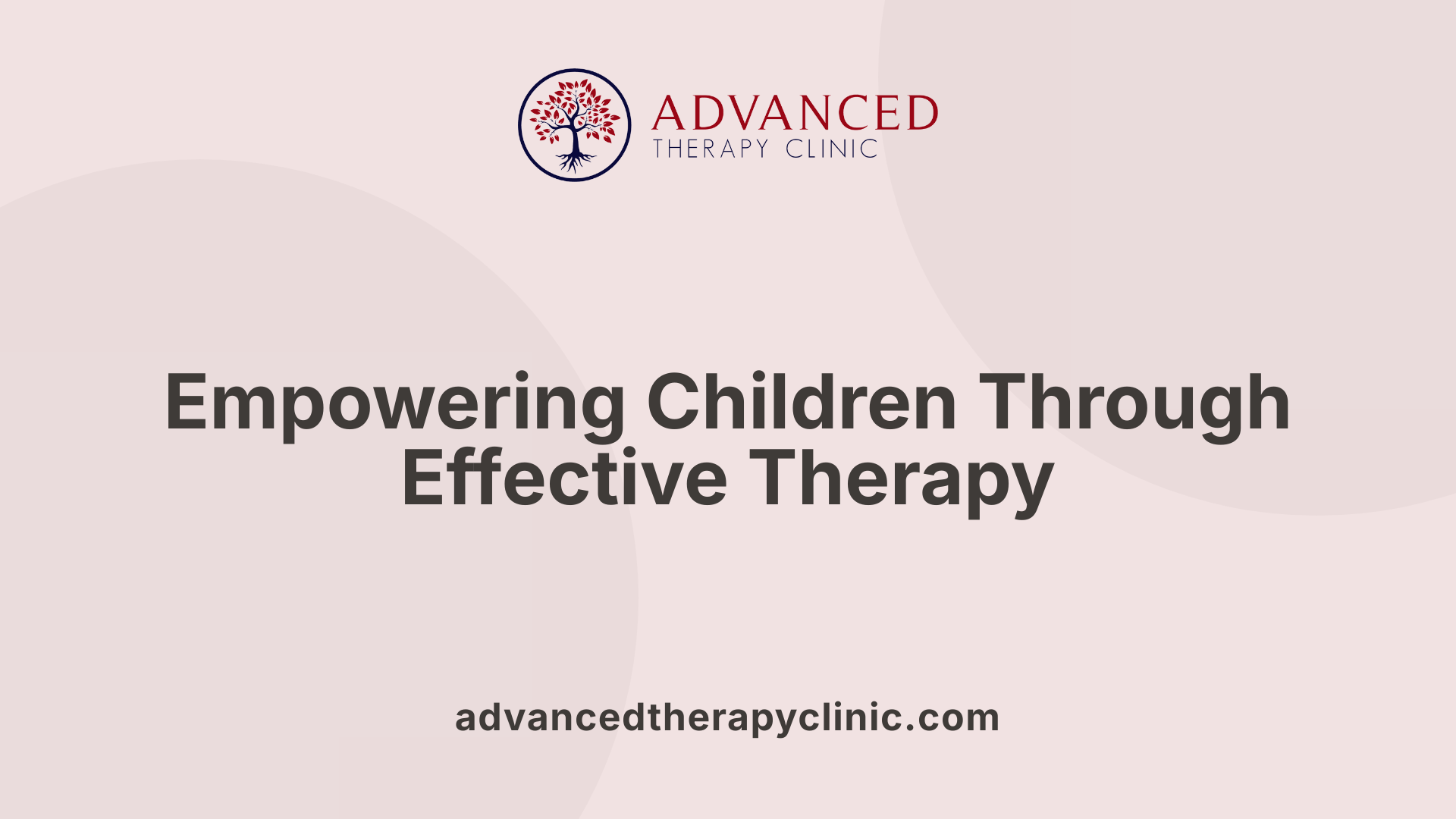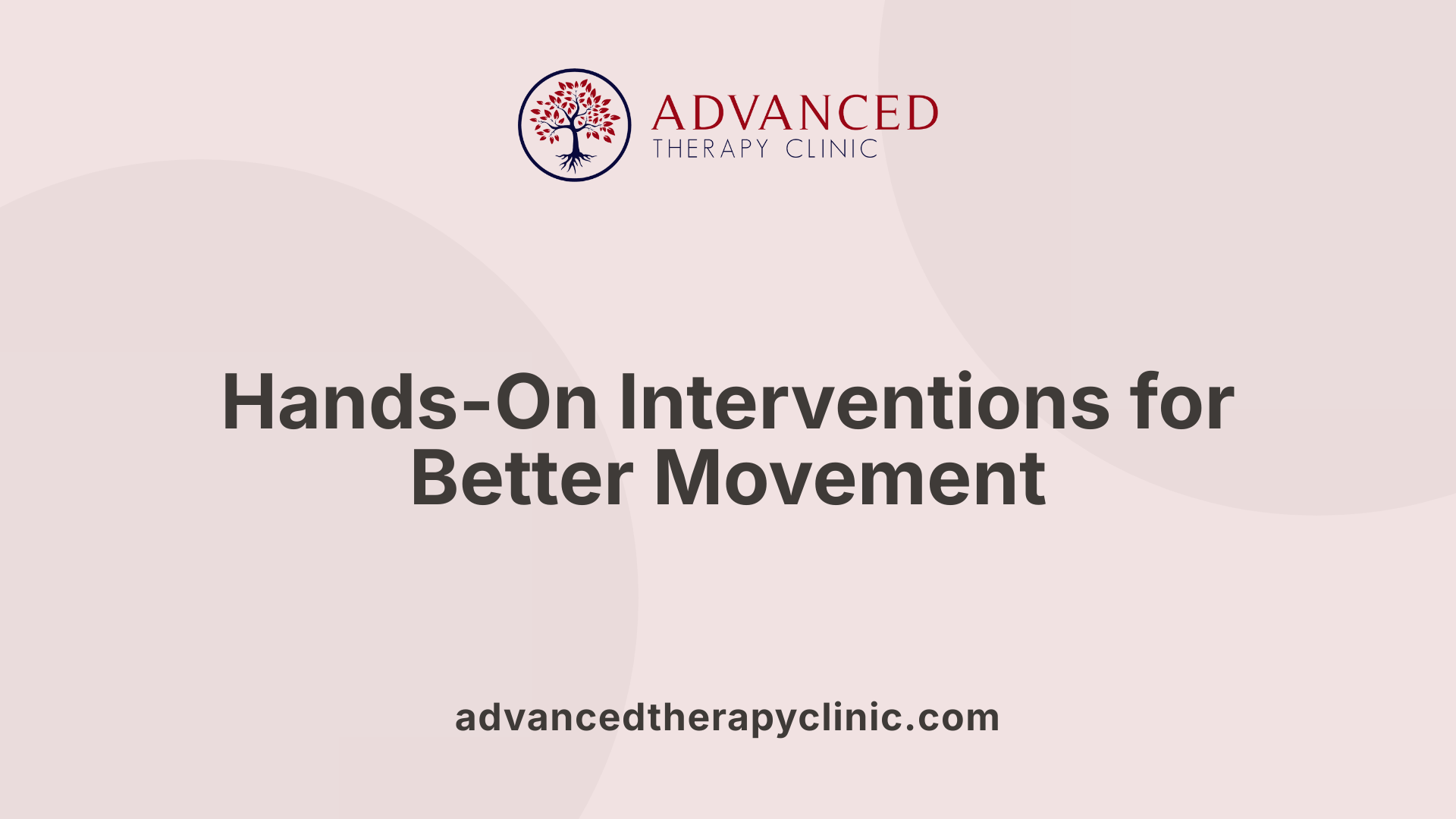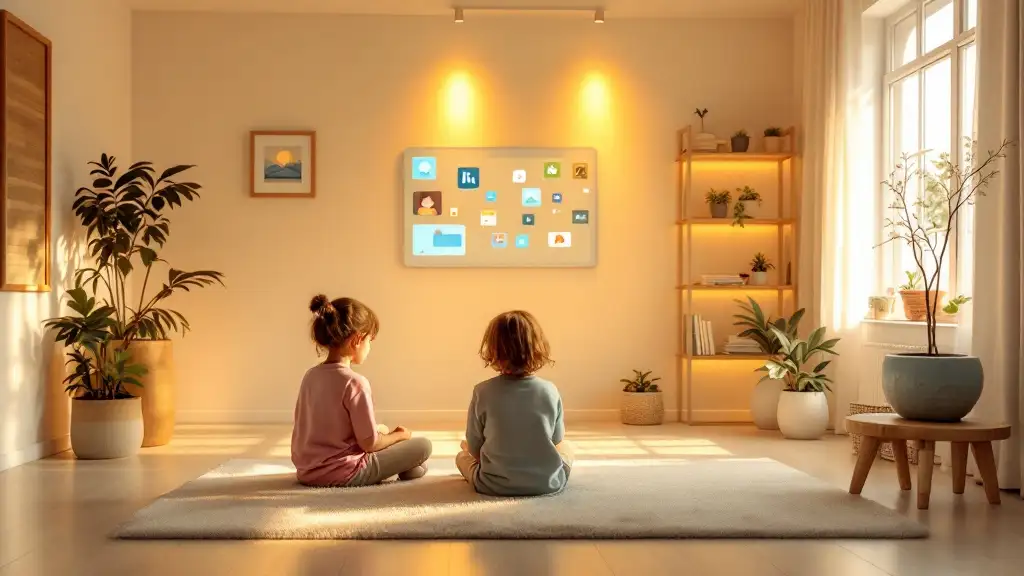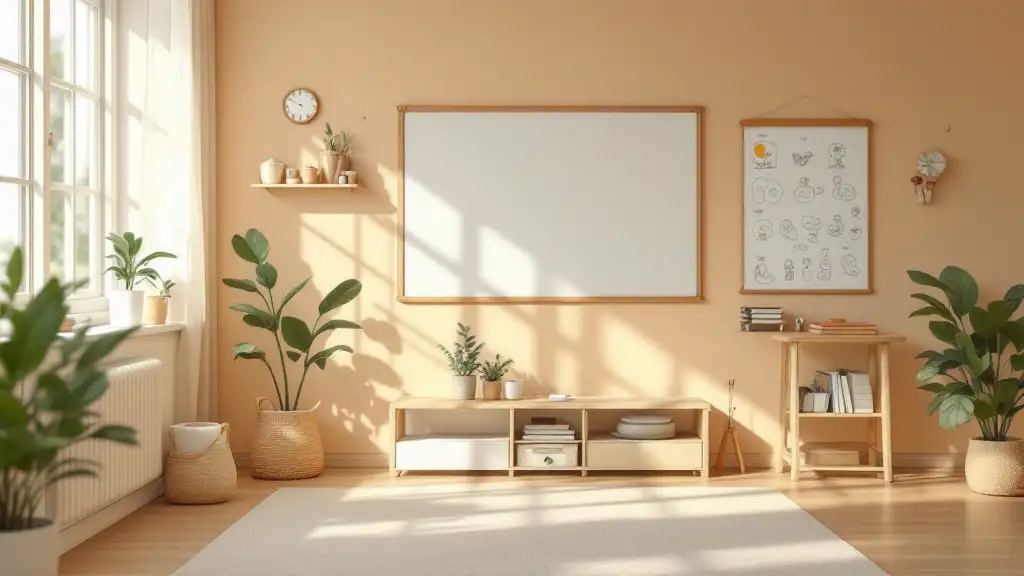Physical Therapy Approaches for Treating Cerebral Palsy


Understanding the Role of Physical Therapy in Cerebral Palsy Management
Physical therapy plays a pivotal role in managing cerebral palsy (CP), offering tailored interventions aimed at enhancing motor skills, mobility, and overall quality of life. Early and sustained physiotherapy can significantly influence developmental outcomes, reduce secondary complications, and foster independence across all age groups.
Development and Implementation of Personalized Treatment Plans

How do physical therapists develop and implement treatment plans for children with cerebral palsy?
Physical therapists begin by conducting thorough assessments of each child's unique motor, sensory, and cognitive functions. This involves evaluating muscle strength, coordination, flexibility, balance, and sensory integration, alongside understanding the child's developmental stage and cognitive abilities. Such comprehensive evaluation helps identify specific movement challenges and areas that need targeted intervention.
Based on these assessments, therapists set individualized goals that are achievable and meaningful for the child. These goals might include improving walking ability, enhancing upper limb function, increasing balance, or reducing muscle spasticity. The aims are tailored to foster independence and improve quality of life.
The treatment plans incorporate effective, evidence-based approaches such as constraint-induced movement therapy (CIMT), gait training, and task-specific exercises that focus on daily functional activities. For spastic cerebral palsy, stretching and resistance exercises are used to relax tight muscles and strengthen weak ones. For other forms like athetoid or ataxic cerebral palsy, exercises are designed to improve muscle tone control and balance.
Therapists choose the right mix of therapies, adaptive devices, and assistive technologies. These might include braces, splints, shoe inserts, robotic exoskeletons, or neuromuscular electrical stimulation to support optimal movement patterns. They also incorporate activities like swimming, horseback riding, or balance training to foster physical development.
Throughout the therapy process, regular monitoring ensures progress is tracked. Adjustments are made based on improvements or new challenges faced by the child. Typical frequency of therapy sessions ranges from two to three times weekly, focusing on movements such as walking, stretching, strengthening, and functional activities like climbing or crawling.
The overall aim is to maximize the child’s functional mobility, improve posture, prevent secondary deformities, and promote as much independence as possible. This requires a multidisciplinary approach, family involvement, and continuous reassessment to adapt goals and strategies as the child develops and their needs change.
Main Approaches in Physical Therapy for Cerebral Palsy

What are the main approaches used in physical therapy for treating cerebral palsy?
Physical therapy for cerebral palsy (CP) involves a variety of techniques tailored to each child's specific needs. These approaches aim to improve motor skills, mobility, and overall quality of life. The most supported strategies include goal-directed and functional training, gait training, constraint-induced movement therapy (CIMT), bimanual training, and serial casting.
Goal-directed and functional training focus on practicing specific movements and activities relevant to daily life. This helps children build practical skills, enhance independence, and boost confidence.
Gait training and mobility exercises are designed to improve walking patterns, balance, and stability. These often incorporate balance exercises, weight-shifting activities, and the use of assistive devices like braces and orthotics.
Constraint-Induced Movement Therapy (CIMT) is especially effective for children with hemiplegic cerebral palsy. It encourages use of the affected limb by restricting movement of the unaffected side, leading to improvements in hand function and strength.
Bimanual training involves engaging both arms in coordinated activities to enhance bilateral coordination, which is crucial for daily tasks like dressing or writing.
Serial casting is used to address spasticity-related joint contractures. Repeated casts gradually increase joint range of motion and decrease hypertonia.
Evidence supports the effectiveness of these individual interventions when combined into personalized treatment plans. Importantly, strengthening targeted muscle groups and practicing functional activities are common techniques that yield positive outcomes.
Most therapy programs are designed to reduce spasticity, improve limb function, and prevent secondary issues like joint contractures or muscle atrophy. Early intervention is particularly beneficial, as it takes advantage of neuroplasticity during critical developmental periods.
In addition to these specific approaches, therapy may include stretching routines, flexibility exercises, and the use of assistive equipment such as wheelchairs, crutches, or bicycles. Family involvement and education are also key components, ensuring that progress continues at home through targeted exercises and activities.
While many interventions show promising results, neurodevelopmental therapy (NDT) has limited or conflicting evidence of effectiveness. Focusing on functional, goal-oriented strategies remains the cornerstone of modern CP therapy.
Overall, these approaches aim to enhance mobility, coordination, and muscle strength, helping children with cerebral palsy develop greater independence and participate actively in daily life.
Benefits of Physical Therapy in Managing Cerebral Palsy Symptoms

What are the benefits of physical therapy in managing cerebral palsy symptoms?
Physical therapy for children with cerebral palsy offers a wide range of advantages that significantly improve their daily lives and overall well-being.
One of the primary benefits is the enhancement of motor skills, strength, and coordination. Through targeted exercises, children can develop better movement control, balance, and muscle strength, which are vital for walking, standing, and performing everyday activities.
Physical therapy also plays a crucial role in reducing muscle spasticity, stiffness, and associated pain. Techniques such as stretching exercises, massage, and the use of mobility aids help in relaxing tense muscles, relieving stiffness, and improving comfort.
Prevention and delay of secondary deformities are other important outcomes. Regular therapy can help prevent issues like joint contractures, scoliosis, lumbar lordosis, and other musculoskeletal abnormalities. For instance, serial casting and stretching routines can increase joint range of motion and reduce hypertonia.
Promoting independence is a key goal of physiotherapy. By improving functional abilities, children can perform daily tasks more effectively and safely. Adaptive equipment like braces, orthotics, and supportive devices are often incorporated to aid mobility and self-care.
Overall, physical therapy enhances quality of life by supporting social participation, enabling children to engage in play, school activities, and recreational pursuits. These interventions contribute not just to physical health but also to emotional and social development.
Numerous research studies reinforce these benefits. Systematic reviews demonstrate that interventions such as constraint-induced movement therapy, goal-directed training, and gait training can significantly boost gait speed, limb function, and independence.
In summary, personalized and early physical therapy offers substantial benefits—improving movement, reducing discomfort, preventing complications, and fostering greater participation in daily and social activities for children with cerebral palsy.
Physical Therapy Methods for Cerebral Palsy Treatment
What are the different physical therapy methods employed in the treatment of cerebral palsy?
Physical therapy (PT) for cerebral palsy involves a diverse set of approaches tailored to improve mobility, strength, coordination, and overall function. The foundation of therapy focuses on exercise-based interventions combined with supportive devices and modalities to manage symptoms and promote development.
One of the primary techniques used are stretching, resistance, and flexibility exercises. These help relieve muscle stiffness, improve joint range of motion, and enhance muscle length, especially in spastic children. For example, stretching exercises can gradually reduce muscle tension and prevent contractures.
Gait and balance training form another crucial component. This includes activities like standing on dynamic surfaces, weight-shifting, and practicing walking patterns. These exercises develop muscle control, improve postural stability, and support independent movement.
The use of orthotic devices and assistive equipment is common in therapy plans. Braces, splints, shoe inserts, and adaptive devices such as walkers or wheelchairs help optimize mobility, correct deformities, and ensure safety during movement.
Modalities such as heat packs, massages, and electrical stimulation play supportive roles. Heat and massage relax muscles and reduce pain, while neurostimulation techniques like neuromuscular electrical stimulation (NMES) strengthen specific muscle groups with increased tone.
Recent advancements have introduced innovative therapies like robotic-assisted gait training and body weight support systems. Robotic exoskeletons and devices such as the Galileo vibration plate provide feedback to the brain, modify hypertonia, and promote better gait patterns.
Specific therapeutic techniques backed by evidence include Constraint-Induced Movement Therapy (CIMT), which encourages use of affected limbs, and bimanual training that boosts coordination of both arms for daily activities. Serial casting manages limb spasticity by increasing joint flexibility via repetitive casting to improve passive range of motion.
In addition, task-specific training—targeting movements relevant to daily routines—and balance exercises are vital for functional independence. Therapists personalize these interventions based on individual assessments, targeting areas like hemiplegia, diplegia, or quadriplegia.
Therapists often incorporate play and developmental activities, especially for young children, to motivate participation and achieve milestones in crawling, standing, and walking. Regular use of exercise balls, resistance bands, and swimming therapy further enhances strength and endurance.
In summary, effective management of cerebral palsy through physical therapy involves a combination of exercises, supportive equipment, modalities, and advanced technological tools. These methods aim to reduce muscle tightness, improve motor control, and increase independence.
| Therapy Method | Description | Purpose/Outcome |
|---|---|---|
| Stretching and Flexibility | Exercises to lengthen muscles and enhance joint mobility | Reduce stiffness and prevent contractures |
| Gait and Balance Training | Activities to improve walking and stability | Support independence and reduce falls |
| Orthotic Devices and Equipment | Braces, splints, shoe inserts | Correct deformities, improve alignment |
| Heat, Massage, Electrical Stim | Modalities for pain relief and muscle activation | Relax muscles, promote circulation |
| Robotic Assistance | Exoskeletons, body weight support systems | Improve gait mechanics, modify tone |
| Constraint-Induced Movement Therapy | Focused use of affected limbs | Enhance limb function |
| Bimanual and Task-Specific Training | Coordinated activities for daily tasks | Increase functional independence |
| Serial Casting | Repeated casting for contracture management | Improve passive range of motion, reduce hypertonicity |
Physical therapy is highly individualized, with practitioners specializing in pediatric and neurologic rehabilitation. The goal remains to maximize a child’s physical capabilities, reduce discomfort, and support a more active, functional life.
Procedures, Exercises, and Techniques in Physiotherapy

What procedures, exercises, and techniques are involved in physiotherapy for cerebral palsy?
Physiotherapy plays a vital role in managing cerebral palsy (CP), involving a range of procedures, exercises, and techniques specifically tailored to each child's needs. These interventions aim to improve motor skills, reduce muscle tightness, and enhance overall mobility and function.
A fundamental component is stretching exercises. These are particularly effective in managing spasticity, a common feature in CP, by relieving muscle stiffness and improving flexibility over time. Techniques like serial casting, which involves the repeated application of casts to increase joint range of motion, are also employed to manage contractures and hypertonia.
Strength training forms another cornerstone of physiotherapy. Focused on large muscle groups such as the core abdominals and gluteals, it helps improve trunk stability, balance, and pelvic control. Resistance exercises, including weight training and the use of resistance bands, are adapted for individual capabilities.
Balance activities and gait training are essential for enhancing postural control and mobility. Exercises such as standing on dynamic surfaces or using balance boards help develop muscle coordination and weight-shifting skills, which are vital for walking and daily activities. As children progress, gait assistance might include the use of braces, orthotics, or robotic exoskeletons.
Task-specific functional exercises aim to improve skills relevant to everyday life. These activities, such as sit-to-stand exercises, crawling, climbing, or propelling a wheelchair, focus on specific movements to enhance independence. Evidence supports the effectiveness of these goal-directed practices in improving overall motor function.
Advanced therapeutic approaches have gained recognition for their benefits. Constraint-Induced Movement Therapy (CIMT), for instance, encourages use of the affected limb by restricting movement of the unaffected side, leading to significant gains in limb function, especially in children with hemiplegic CP. Similarly, bimanual training involves structured activities that improve coordination between both arms.
Serial casting is frequently used to treat spasticity-related joint contractures, helping increase joint mobility and decrease hypertonia.
Complementary methods like aquatic therapy and hippotherapy (horse riding therapy) are recognized as valuable adjuncts. Aquatic therapy provides a low-impact environment that reduces muscle tone and promotes movement, while hippotherapy helps improve balance, posture, and strength through the therapeutic effects of horseback riding.
In addition to these exercises and therapies, physical therapists utilize various supportive tools and equipment, including mobility aids like braces, splints, and orthotics, as well as innovative devices like robotic exoskeletons and body weight support systems.
Throughout all interventions, a multidisciplinary team approach ensures that each child's therapy plan is personalized, progressive, and aligned with developmental goals. Consistent participation, both in clinical settings and at home, enhances the effectiveness of physiotherapy and helps children with CP achieve greater independence and quality of life.
| Procedure/Technique | Purpose | Tools/Methods | Evidence of Effectiveness |
|---|---|---|---|
| Stretching Exercises | Reduce spasticity | Manual stretching, casting | Proven to improve flexibility; reduces contractures |
| Strength Training | Increase muscle strength | Resistance bands, weights | Supports mobility and stability |
| Balance Activities | Improve stability | Balance boards, dynamic surfaces | Enhances postural control |
| Gait Training | Improve walking ability | Treadmills, orthotics, exoskeletons | Supports mobility; improves gait parameters |
| Task-Specific Exercises | Enhance functional skills | Reaching, standing, transfers | Strong evidence for functional gains |
| Constraint-Induced Movement Therapy | Improve limb use | Restrict unaffected limb | Demonstrated to increase affected limb use |
| Serial Casting | Manage hypertonia | Repeated casting | Effective in increasing joint range of motion |
| Aquatic and Hippotherapy | Promote movement and stability | Pools, horses | Reduce muscle tone; improve balance |
Effective physiotherapy combines these procedures within a structured, goal-oriented framework. Individualized plans and consistent practice are essential to maximize benefits and support lifelong mobility and independence for children with cerebral palsy.
Research Evidence for Effectiveness of Interventions
How effective are physical therapy interventions for cerebral palsy according to research?
Research indicates that physical therapy (PT) plays a crucial role in improving the motor functions and overall quality of life for children with cerebral palsy (CP). Multiple systematic reviews and meta-analyses have analyzed various PT approaches, providing valuable insight into their effectiveness.
Overall, evidence supports the use of specific interventions such as constraint-induced movement therapy (CIMT), gait training, and goal-directed/functional training. These methods have moderate to strong scientific backing for improving gait speed, enhancing upper limb function, and increasing the use and quality of affected limbs.
CIMT, for example, is particularly effective in children with hemiplegic CP. It encourages the use of the affected arm and has been shown to produce positive changes in hand function and movement quality. Similarly, bimanual training, involving structured tasks that engage both arms, demonstrates effectiveness in improving coordination and functional independence.
Task-specific training, which focuses on activities relevant to everyday life, also shows strong evidence for enhancing overall functional abilities, including walking and self-care skills.
However, the research presents limited or conflicting evidence regarding some other common interventions such as strength training and cardiorespiratory programs. Studies on these approaches have produced mixed results, suggesting that their benefits may depend heavily on individual circumstances and the specific implementation.
Moreover, neurodevelopmental therapy (NDT), once widely used, has been found to be ineffective based on current systematic reviews. This emphasizes the importance of evidence-based practice in choosing appropriate therapies.
The effectiveness of PT varies significantly based on individual factors such as age, severity of symptoms, and the intensity and consistency of therapy. Intensive, goal-oriented, and activity-based interventions tend to yield better outcomes in children with CP.
In summary, physical therapy interventions are most beneficial when tailored to the child's unique needs and combined with other evidence-based practices. The ongoing research continues to refine approaches, ultimately aiming to maximize independence and functional mobility in children with cerebral palsy.
Equipment and Tools Utilized in Therapy
Physical therapy for children with cerebral palsy involves a wide range of equipment and tools tailored to support their unique needs and improve their functional abilities.
One of the most commonly used types of equipment is orthotic devices. These include braces, splints, and shoe inserts that help enhance gait, prevent joint deformities, and provide necessary support for weakened or spastic muscles. Ankle-foot orthoses (AFOs) and supra-malleolar orthoses (SMOs) are designed specifically to support the ankle and foot, promoting better walking patterns.
Mobility aids are essential for promoting independence and safe movement. These include devices such as walkers, crutches, wheelchairs, and motorized scooters. They help children navigate their environment more effectively and participate actively in daily routines.
In the realm of therapy tools, equipment like Swiss balls and wobble boards are popular options for developing core strength, improving balance, and enhancing muscle coordination. Resistance bands and therapy balls are used for strength training and flexibility exercises, providing adjustable resistance suited to individual needs.
Modalities such as Transcutaneous Electrical Nerve Stimulation (TENS), blood flow restriction (BFR) cuffs, and pulley systems are also employed. TENS units can help reduce pain and spasticity, while BFR cuffs stimulate muscle growth during low-intensity exercises, making them advantageous for children with limited strength or movement.
Advanced assistive technologies are increasingly integrated into therapy programs. Robotic exoskeletons and body weight support systems are cutting-edge devices used to facilitate gait training. These technologies assist with walking practice, improve endurance, and promote muscle activation, especially in children with severe mobility challenges.
Overall, the combination of traditional orthoses, mobility aids, therapeutic tools, modalities, and advanced technology provides a comprehensive approach to managing cerebral palsy. Each piece of equipment is selected based on the child's specific condition, therapeutic goals, and developmental stage to maximize benefits and promote independence.
| Equipment Type | Examples | Purpose | Additional Notes |
|---|---|---|---|
| Orthotic Devices | Braces, splints, shoe inserts, AFOs, SMOs | Support joints, correct deformities, improve gait | Customized to individual needs |
| Mobility Aids | Walkers, crutches, wheelchairs, scooters | Assist safe movement, enhance independence | Varies in design for age and mobility level |
| Therapy Tools | Swiss balls, wobble boards, resistance bands | Build strength, improve balance and coordination | Used in exercises and functional tasks |
| Modalities | TENS, pulley systems, BFR cuffs | Reduce pain, build muscle strength, facilitate movement | Often used alongside other therapies |
| Advanced Technologies | Robotic exoskeletons, body weight support systems | Facilitate gait training, improve endurance | High-tech options requiring specialized training |
These tools and devices play a vital role in helping children with cerebral palsy achieve greater mobility, stability, and overall quality of life, making therapy more effective and tailored to individual needs.
Age-Specific Considerations in Therapy

What are the age-specific considerations for physical therapy in cerebral palsy?
Cerebral palsy (CP) affects children differently depending on their age and developmental stage. Therefore, physical therapy must be tailored to meet the evolving needs of each child, ensuring optimal motor development and quality of life.
In early childhood, from birth to about age 4, therapy centers around supporting foundational motor milestones. Therapists focus on play-based activities that stimulate movement, help with sitting, crawling, and standing, and promote sensory integration. Positioning and gentle stretching are crucial during this phase to prevent contractures and improve muscle flexibility. Early intervention also leverages neuroplasticity—the brain's ability to reorganize itself—making it an ideal window to foster motor development.
As children grow into school age (5 to 18 years), the focus shifts toward refining skills such as walking, balance, coordination, and strength. Functional training becomes central, helping children perform daily activities more independently. Use of adaptive equipment like braces, orthotics, and mobility aids increases as needed. Therapy routines are tailored to specific needs, such as improving gait or managing spasticity, while also addressing participation in school and recreational activities.
For adolescents and adults living with CP, the focus extends to maintaining mobility, managing pain, and adapting the environment to enhance independence. Strategies include strength training, flexibility exercises, and modifications to accommodate changes brought on by growth or secondary conditions such as scoliosis or joint deformities. Pain management, energy conservation techniques, and assistive device optimization are key to improving quality of life.
Throughout all ages, therapy strategies need regular reevaluation and adjustment. Growth, secondary musculoskeletal issues, and individual goals influence the approach. For example, a child with increasing scoliosis may require specific stretching, bracing, or surgical consultation, while an adolescent focusing on sports might benefit from targeted strength and balance training.
Overall, an effective cerebral palsy therapy plan is dynamic, personalized, and aims to promote maximal mobility, functional independence, and well-being at every stage of life.
Here's a summary of how therapy considerations evolve with age:
| Age Group | Focus Areas | Typical Interventions | Special Considerations |
|---|---|---|---|
| Birth to 4 years | Developmental milestones, prevention of contractures | Play-based activities, gentle stretching, positioning | Early neuroplasticity, early detection of delays |
| 5 to 18 years | Gait, balance, strength, functional independence | Gait training, adaptive equipment, balance exercises | School activities, sports, transition to adulthood |
| Adolescents & Adults | Mobility, pain, environmental adaptations | Strengthening, flexibility, assistive devices | Aging-related musculoskeletal issues, pain management |
Effective therapy at any age requires skilled professionals experienced in pediatric and neurological conditions, using a combination of hands-on care, adaptive technologies, and family involvement. Regular assessment ensures interventions stay aligned with the child's growth and changing needs, helping them achieve their best possible outcomes.
Enhancing Outcomes through Multidisciplinary and Patient-Centered Care
Effective management of cerebral palsy through physical therapy requires a comprehensive, individualized approach that integrates evidence-based techniques, innovative technologies, and family involvement. Early intervention, continuous assessment, and tailored strategies across the lifespan are critical in maximizing mobility, minimizing secondary complications, and improving quality of life for those affected. A multidisciplinary team, led by skilled physical therapists, ensures that children and adults with CP receive holistic care designed to promote maximal independence, health, and participation in everyday activities.
References
- Physical Therapy for Cerebral Palsy - Improving Mobility
- Evidence-based Approach to Physical Therapy in Cerebral ...
- Physiotherapy Treatment Approaches for Individuals with ...
- Physical Therapy Guide to Cerebral Palsy
- Physical Therapy for Cerebral Palsy: What to Expect and ...
- Cerebral Palsy Physical Therapy: Exercises & Techniques
- Cerebral Palsy and Physical Therapy
- Physical Therapy Interventions in Children With Cerebral ...
- How Physical Therapists Help Children with Cerebral Palsy
- Evidence-based Approach to Physical Therapy in Cerebral ...
Recent articles

Physical Therapy Approaches for Treating Cerebral Palsy
Innovative Strategies in Cerebral Palsy Rehabilitation

The Benefits of Occupational Therapy for Enhancing Play and Leisure Skills
Unlocking Potential Through Play: How Occupational Therapy Transforms Lives

Autism Apps For Children
Harnessing Technology to Support Children with Autism

How ABA Therapy Teaches Coping Skills for Anxiety
Building Emotional Resilience in Autism Through ABA Approaches

How Autism Affects Daily Life Adults
Understanding the Complexities of Autism in Adult Daily Life

What Is Speech Sound Disorder
Understanding Speech Sound Disorders: An In-Depth Exploration


